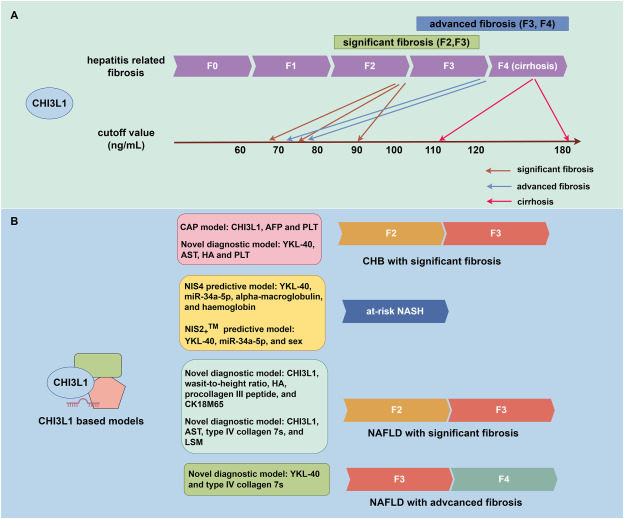
Role of chitinase-3-like protein 1 in liver diseases: A comprehensive review


Chitinase-3-like protein 1 (CHI3L1) is part of the glycoside hydrolase family 18. Despite lacking enzymatic activity, its unique structure allows it to bind to ligands, altering its steric configuration to mediate cell proliferation, inflammation, fibrosis, and carcinogenesis. In liver disease, CHI3L1 serves as a common diagnostic biomarker for hepatitis-related fibrosis. Additionally, CHI3L1 can predict the risk of non-alcoholic steatohepatitis, the progression of hepatic fibrosis, and the prognosis of alcoholic liver disease and hepatocellular carcinoma. It also aids in diagnosing and staging non-alcoholic fatty liver disease-related and alcoholic liver disease-related fibrosis, and in monitoring hepatitis-related fibrosis treatment. Furthermore, CHI3L1 is secreted by various cells, including hepatocytes, hepatic stellate cells, macrophages, and mesenchymal stem cells, to regulate hepatic injury, fibrosis, steatosis, and hepatocellular carcinoma through different signaling pathways. This review highlights CHI3L1's dual roles as both a biomarker and regulator in various liver diseases, aiming to broaden researchers' understanding of its potential applications.
